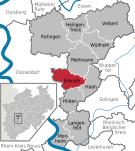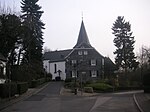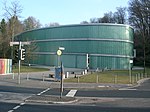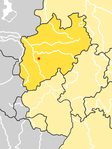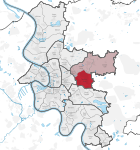Erkrath Nord station
Buildings and structures in Mettmann (district)North Rhine-Westphalia railway station stubsRailway stations in Germany opened in 1905Rhine-Ruhr S-Bahn stationsRhine-Ruhr S-Bahn stubs ... and 1 more
S28 (Rhine-Ruhr S-Bahn)

Erkrath Nord station is a Rhine-Ruhr S-Bahn station in the town of Erkrath in the German state of North Rhine-Westphalia. It was opened between 1905/14 on the last section of the Düsseldorf-Derendorf–Dortmund Süd railway from Mettmann station (now Mettmann Stadtwald station) to the Rhenish Railway Company's Düsseldorf station, opened on 15 September 1879.The station is served by Rhine-Ruhr S-Bahn line S 28 at 20-minute intervals
Excerpt from the Wikipedia article Erkrath Nord station (License: CC BY-SA 3.0, Authors, Images).Erkrath Nord station
Zum Nordbahnhof,
Geographical coordinates (GPS) Address Nearby Places Show on map
Geographical coordinates (GPS)
| Latitude | Longitude |
|---|---|
| N 51.2293 ° | E 6.9094 ° |
Address
Erkrath Nord
Zum Nordbahnhof
40699 , Alt-Erkrath
North Rhine-Westphalia, Germany
Open on Google Maps
